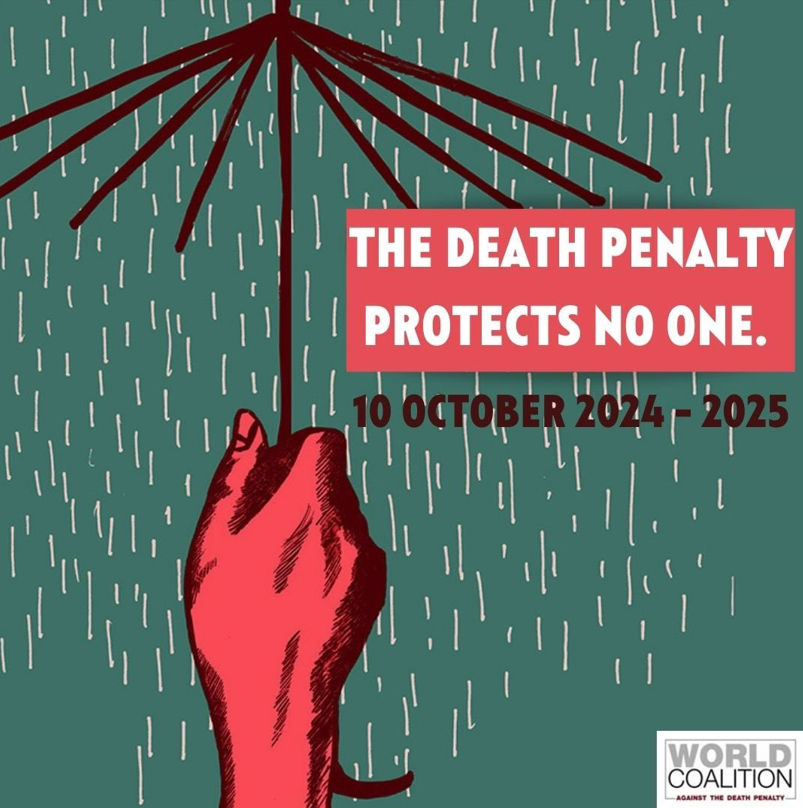October 10th - World Day Against The Death Penalty
55 countries still have the death penalty, and the United States is one of them.

TW: description of state-sponsored violence via death penalty execution
Today marks the 22nd World Day Against the Death Penalty. This year, we take time to reflect on the misconceptions surrounding the death penalty and its connection to safety.
Does it truly contribute to a safer society?
Using rigorous statistical and experimental control methods, both economics and criminal justice studies have consistently found that there is no evidence for deterrence of violent crimes in states that allow capital punishment. One such study, a 2009 paper by criminology researchers at the University of Dallas, outlines experimental and statistical flaws in econometrics-based death penalty studies that claim to find a correlated reduction in violent crime. The death penalty does not stop people from killing. Executions don’t make us safer.
Capital punishment was halted in the U.S. in 1972 but reinstated in 1976, and since then, nearly 1,600 people have been executed. To whose gain? Study after study shows that the death penalty does not deter crime, puts innocent people to death, is racially biased, and is cruel and inhumane. It is state-sanctioned homicide, wholly ineffective, often botched and barbaric in it's process. There is no ethical, scientifically supported, medically acceptable or morally justifiable way to carry it out.
The execution of Kenneth Eugene Smith in January 2024 demonstrates this barbarity. After a failed attempt at lethal injection by prison officials seemingly inexperienced in the placement of an IV, the state of Alabama killed Smith in January using nitrogen gas. The Alabama attorney general claimed that this method of execution was fast and humane, despite no supporting evidence. Eyewitnesses recounted that Smith thrashed during the nitrogen administration and took more than 20 minutes to die.
Programs such as the Innocence Project have shown, over and over, that innocent people have been sentenced to death. Since 1973, nearly 200 people on death row have been exonerated, based on appeals, the reopening of cases, and the entrance of new and sometimes previously suppressed evidence. People have recanted testimony, and supposedly airtight cases have been poked full of evidentiary holes.
Through the death penalty, the criminal justice system has killed at least 20 people now believed to have been innocent and uncounted others whose cases have not been reexamined. Too many of these victims have been Black or Hispanic. This is not justice. These are state-sanctioned hate crimes.
A furious urge for vengeance against those who have done wrong—or those we think have done wrong—is the biggest motivation for the death penalty. But this desire for violent retribution is the very impulse that our criminal justice system is made to check, not abet. Elected officials need to reform this aspect of our justice system at both the state and federal levels. Capital punishment does not stop crime and mocks both justice and humanity.
The death penalty in the U.S. must come to an end.
Visit our post from yesterday to learn how you can help advance universal clemency in California, as well as reach out to policy makers in other states to advance the work toward abolishing this unjust, brutal practice in the United States once and for all.










